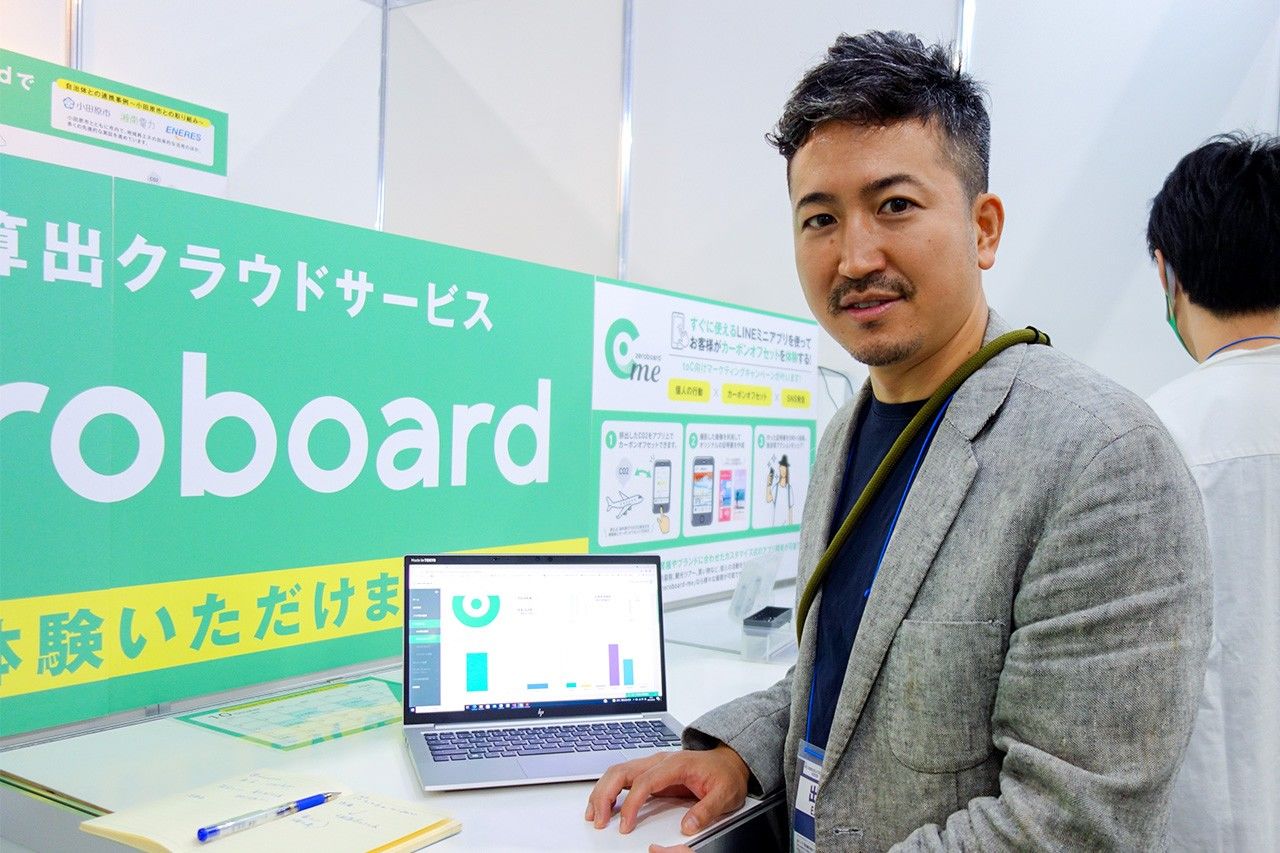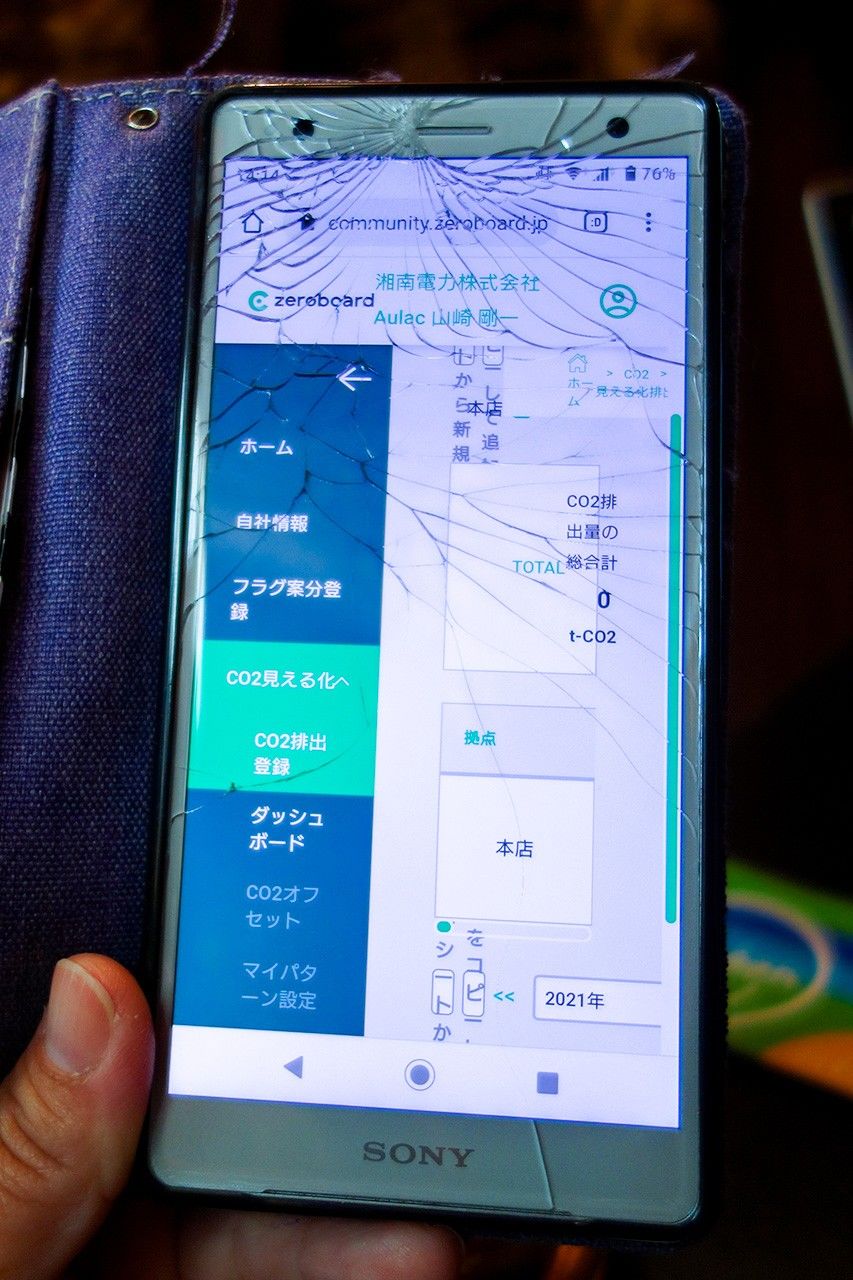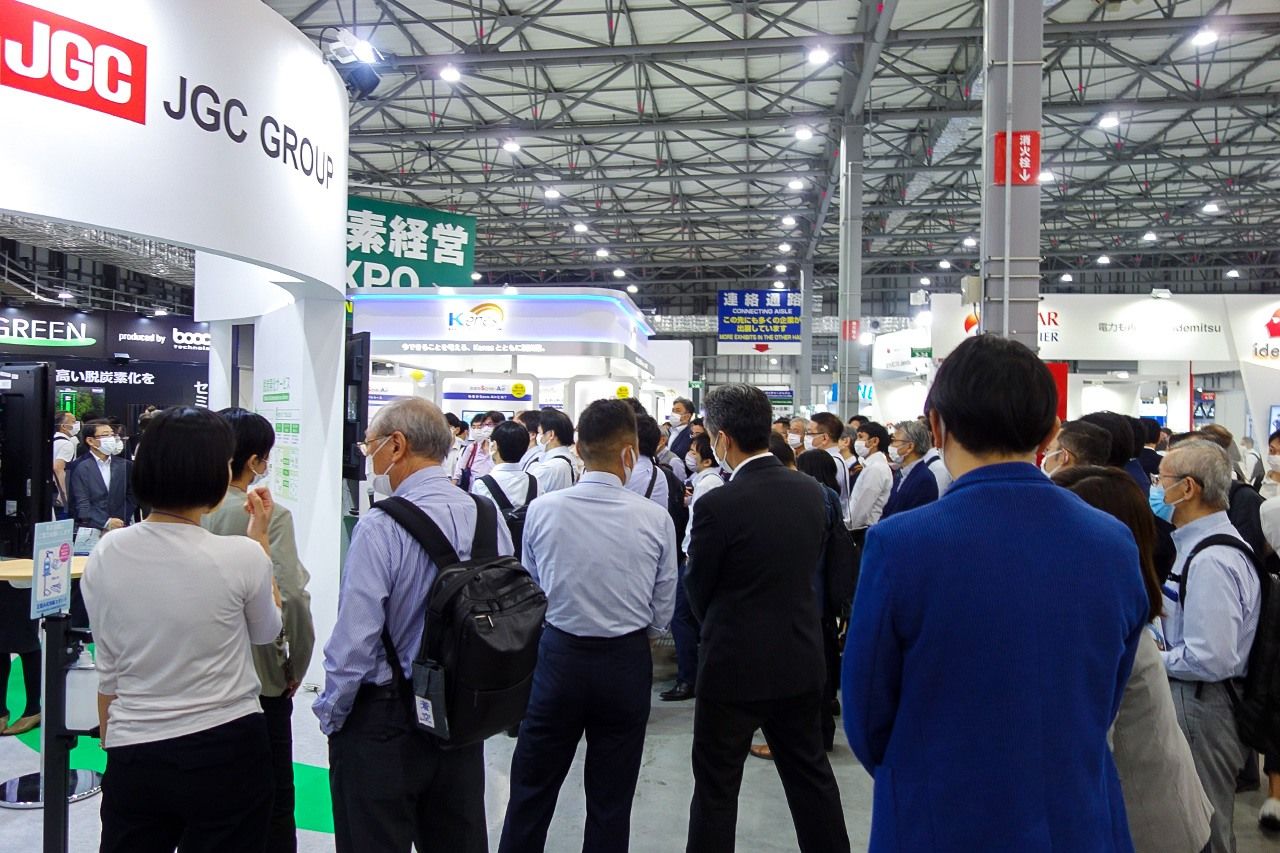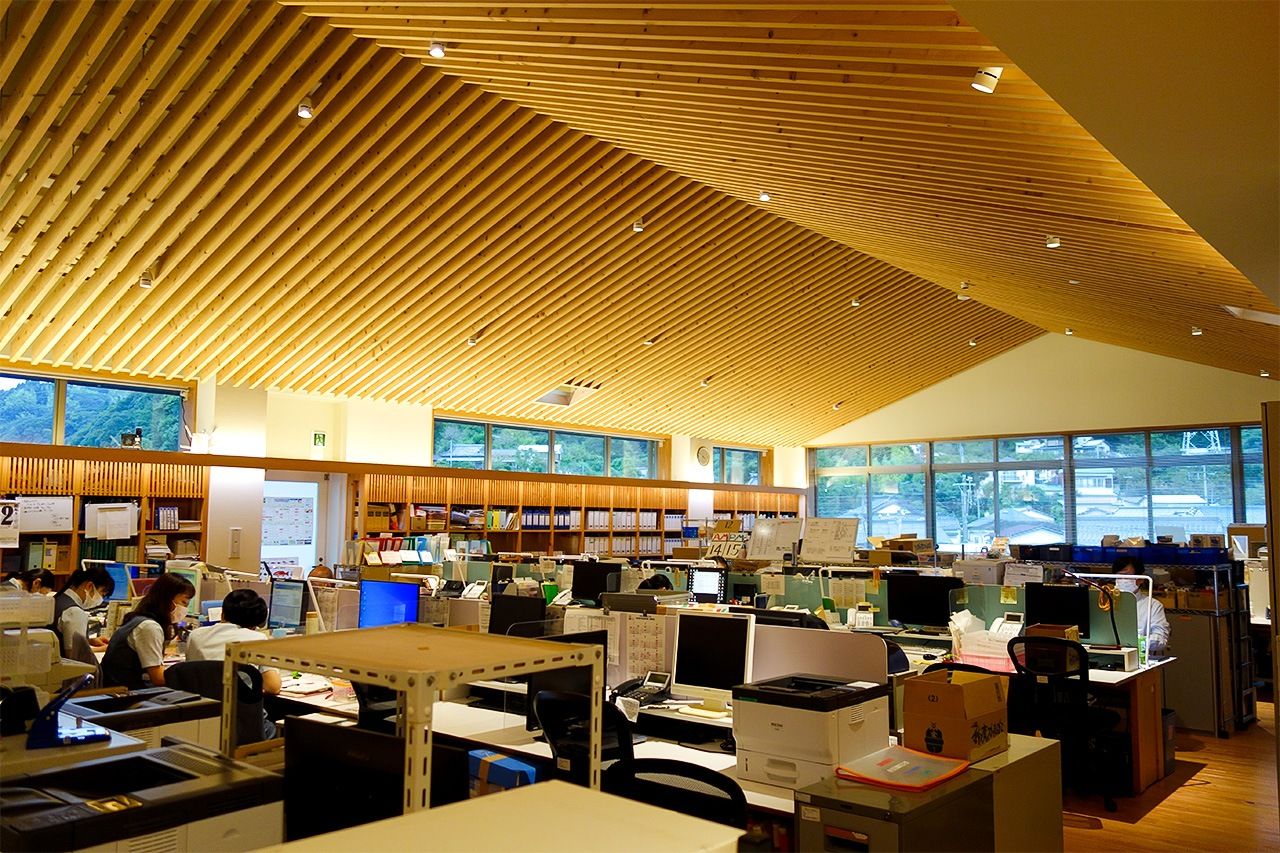Odawara's challenge to decarbonization: The instigator is the manager of a long-established kamaboko shop
Odawara City, Kanagawa Prefecture, faces the Pacific Ocean and is bathed in the sunshine of the West Shore. After the Great East Japan Earthquake in 2011, the owner of a long-established kamaboko (fish cake) shop became aware of the need for self-reliant power generation in the region, and set up a solar power generation company. “Local production for local consumption” of renewable energy leads to global warming countermeasures and revitalization of local economies. Rather than relying on large-scale power supplied from the central government, we will shift to regionally distributed and self-sustaining power. We are also promoting exchanges to spread small experiments to various places.
the other side of the outlet
Odawara prospered as a post town on the Tokaido during the Edo period and was known for serving kamaboko to feudal lords who alternated their attendance. Founded in 1865 (Keio 1) in this area, Suzuhiro Kamaboko faced the biggest crisis since its founding, the Great East Japan Earthquake, in its 146th year. Electricity is indispensable in the manufacturing process of kamaboko, such as kneading, steaming, and refrigerating the minced fish.
Teisuke Suzuki, vice president of the company, looks back on those days and says, “Planning power outages are very difficult to deal with. If the power goes off in the morning one day and in the afternoon the next, the factory cannot continue. I thought I had a system in place, but I felt that I was riding on a system that was surprisingly fragile."

Teisuke Suzuki, Executive Vice President of Suzuhiro Kamaboko, answering an interview (photographed by the author)
What was even more shocking was that, despite being about 300 kilometers away from Fukushima, cesium was detected in Ashigara tea, a specialty product of the nearby town of Yamakita, and it was no longer possible to ship it. "Thanks to the blessings of nature, we have been able to do business here for a long time. What happened in Fukushima is by no means someone else's problem." Some of the company's products are made from locally harvested horse chestnuts and okigis, and the underground water from the Hakone Tanzawa mountain range is used to wash away the blood and oil from the cut meat. Kamaboko is truly a local product of the sea and the forest.
It also highlighted the gap between the Tokyo metropolitan area, which is a large consumption area, and the remote Fukushima area, which suffered the most damage from the nuclear accident, while the benefits of the daily power supply were in the Tokyo metropolitan area. "I thought that the way of life of accepting only the things that are convenient for me and pretending not to know the things that are inconvenient is different from the providence of this world. What is on the other side of the outlet? 3.11 triggered me. I became interested in ," says Vice President Suzuki.
Local production for local consumption of electricity
Aware of the risks of completely relying on giant electric power companies for power supply, Vice President Suzuki came up with the idea of “locally producing electric power” to generate as much locally as possible. It is not possible to build a large-scale power plant due to cost and technical aspects. The only option is renewable energy, which is environmentally friendly as it does not emit carbon dioxide (CO2).
He immediately held a study group in his hometown and invited citizens to a symposium. 37 companies from the local business community shared a sense of urgency and shared a sense of urgency to rethink energy in Odawara. started. Citizens' investment was also solicited, and 100 million yen was collected in three months.
The retail company responsible for local consumption is Shonan Electric Power Co., Ltd., which has received funding from local companies such as Hotoku. It sells electricity to the local community from "Houtoku," which has solar panels installed in mountainous areas. However, that alone was not enough, and since 2020, we have been developing a “zero-yen solar” program that allows people to install solar panels on the roofs of their houses for free, while making use of subsidies from Kanagawa Prefecture. The electricity generated is sold to roof providers, and sometimes surplus electricity is generated.

Shonan Electric Power's "0 yen solar" (provided by the company)
After the establishment of the solar power generation company, there was an incident that made the citizens of Odawara strongly aware of the threat of climate change. Typhoon No. 19 in October 2019 caused record heavy rain damage. In Hakone, which has close economic ties with Odawara, rainfall exceeded 900mm per day, washing away the tracks and bridge piers of the Hakone Tozan Railway and stopping tourists for a while. The issue of global warming was perceived as ``my own matter related to eating habits'' (Mr. Suzuki).

The Hakone Tozan Train between Miyanoshita and Kowakidani was swept away by landslides caused by heavy rain (Provided by Jiji)
put money into the local economy
Local production for local consumption of renewable energy also benefits the local economy. The cost of electricity in Odawara City, which has a population of 190,000, is about 30 billion yen a year. Vice President Suzuki said, "If we can reduce payments to existing electric power companies by even 10% through local production and consumption of electricity, we can prevent 3 billion yen from flowing out of the city. It's huge for the economy," he said.
Shonan Electric Power Co., Ltd. has put into practice a mechanism to make more money in the region. In September of this year, the company signed agreements with Odawara City and cloud service company Zeroboard. Homes that have contracted "0 yen solar" are considered to have "environmental value" (a type of emission rights) that does not emit CO2, sell this to restaurants in the city, and part of the price is started an attempt to distribute discount coupons for food and drink.

Masaki Hara, the company's president, said, "People who have contracted for 0 yen solar will want to go to a restaurant that uses the environmental value they have created. That will create economic exchanges and face-to-face relationships. born,” he explains.
Aulac, a Vietnamese restaurant in the city, uses electricity with environmental value (carbon-free). The owner, Yuko Mimori, said that she chose the facility because ``just by changing the power contract, we can do eco-friendly activities.'' Although he has yet to see a customer come to the store with a coupon, he expects the effect of attracting customers by selecting products such as Vietnamese udon pho and saying, "I'd like to think of ways to appeal to customers, such as marking them as carbon-free." .

Masaki Hara, President of Shonan Electric Power Company (photographed by the author)
Currently, there are 133 0-yen solar contractors (of which 49 are in Odawara City), but only 8 restaurants in the city use carbon-free power and issue coupons. It's been a while since this initiative started, and it's still in the demonstration stage, so the scale is still small.
In the future, President Hara aims to expand solar power sources, not only on roofs of houses, but also on parking lots, home carports, and abandoned farmlands. At the same time, he is collaborating with the local Odawara Hakone Chamber of Commerce and Industry to develop restaurants that purchase carbon-free electricity, and is considering expanding supply and demand.
"Visualization" of CO2

Zeroboard President Michitaka Tokeji and a PC terminal (photographed by the author)
Aulac owners check their CO2 emissions on their smartphones
Aulac owner checks emissions on smartphone (photographed by author)
The secret weapon that supports this series of mechanisms is ZeroBoard's service, which allows you to see at a glance the amount of CO2 emissions simply by entering the amount of electricity used. The company's president, Michitaka Tokeiji, explains about the effect, "It's difficult to reduce emissions just by thinking about it. You can't do it unless you visualize it."

Aulac's Mimori-san imports the data into his smartphone and checks the graphed amount of emissions. “When I learned that our store emits 7.3 tons of CO2 annually (equivalent to seven spheres with a diameter of 10 meters in volume), I changed my mindset. Even though the amount of CO2 emissions decreased dramatically just by changing the power contract. I was surprised."
Although the electricity bill will be slightly higher due to the addition of the environmental value, the willingness to save electricity will be increased accordingly.
Efforts that do not rely on nuclear power - Mr. Suzuki
The movement to decarbonize is spreading rapidly among companies. The Tokyo Stock Exchange will be reorganized next spring, creating a "prime market" of super-blue companies that attract foreign investors. In order to be listed here, it is required to disclose information on efforts to tackle climate change, and the momentum for decarbonization of large companies is increasing. The movement is expected to spread to small and medium-sized subcontractors, and financial institutions are said to be looking for financing opportunities with preferential interest rates on the condition of decarbonization.

Smart Energy Week exhibition including the successful "Decarbonization Management Seminar" at the Aomi Exhibition Hall of Tokyo Big Sight on September 29 (photographed by the author)
ZEROBOARD President Tokeji Tokeji expects the market for CO2 visualization services to expand, and predicts, "There will be competition for renewable energy in the future, and there will be a shortage." In the future, the question will be how to respond to the expanding demand.
The 26th Conference of the Parties to the United Nations Framework Convention on Climate Change (COP26) was held in Glasgow, England from October 31, 2018, as the United Nations Intergovernmental Panel on Climate Change (IPCC) sounded a strong warning of the imminent threat of global warming. will be Prior to this, the Japanese government revised its Basic Energy Plan and announced that it would give top priority to the spread of renewable energy. However, the spread of renewable energy in Japan is lagging behind that of other developed countries, and Prime Minister Fumio Kishida is considering restarting nuclear power plants that are currently inactive, saying that "nuclear power is an important option."
In response, Vice President Suzuki of Suzuhiro Kamaboko says that there is still a lot of room for energy conservation in companies and households. On top of that, he points out, "Renewable energy is not only in the form of electricity, but also includes solar heat, geothermal heat, and woody biomass. It is premature to think only of electricity and say, 'Nuclear power is the only way to reduce CO2 emissions.'"
The head office of Suzuhiro Kamaboko. Natural lighting from the ceiling, photovoltaic power generation, geothermal heat, and groundwater are also used to reduce energy consumption to one-third of the usual amount (photographed by the author).
The head office of Suzuhiro Kamaboko. Natural lighting from the ceiling, photovoltaic power generation, geothermal heat, and groundwater are also used to reduce energy consumption to one-third of the usual amount (photographed by the author).
The movement of Odawara is a very small attempt from the perspective of Japan as a whole, but Mr. Suzuki launched the "Management Network Conference for Thinking about the Economy from Energy" and promoted study of self-reliant energy with about 300 small and medium-sized enterprise managers nationwide. ing. “Each region has different circumstances, so it would be good if people in each region became players and created their own independent energy systems. We should be able to help each other.”

Banner photo: Hotoku Energy solar panels in the mountains (courtesy of Shonan Electric Power Co.)






